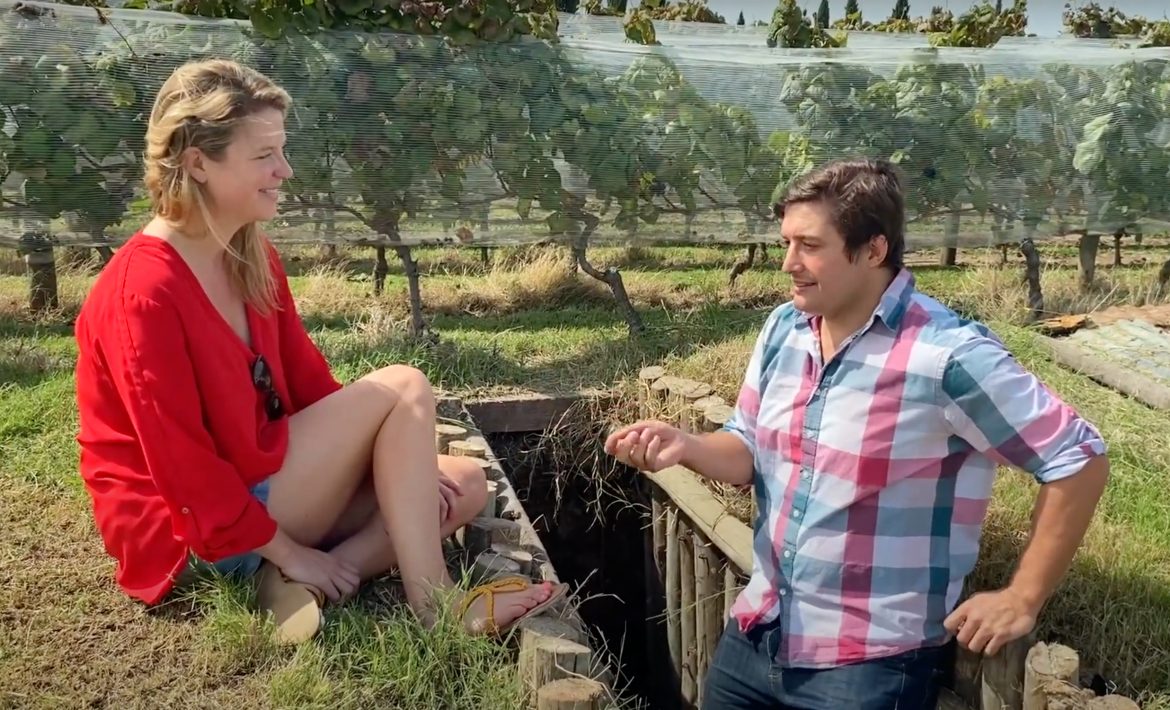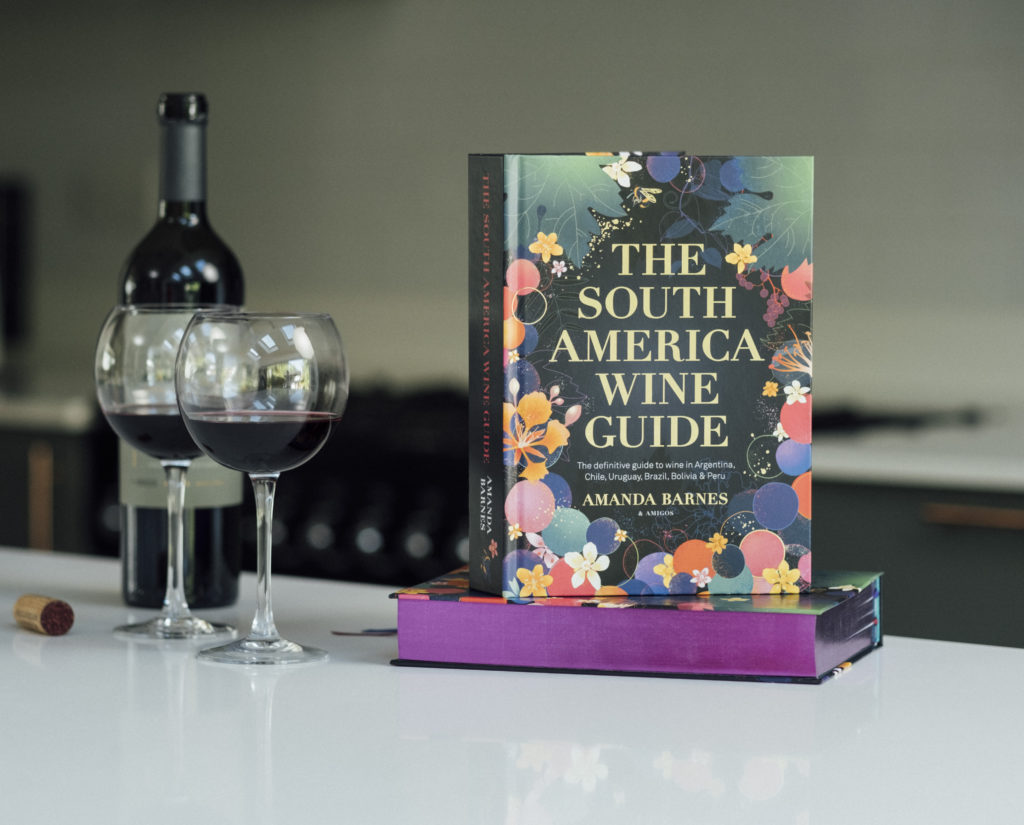Have you ever wanted to turn the earth upside down? That’s exactly what Santiago Deicas, winemaker at Familia Deicas winery in Uruguay, did for their Suelo Invertido wine in a vineyard in Canelones. Amanda Barnes interviews Santiago on this innovative project that turned the vineyard soil upside down in order to bring the subsoil of limestone to the surface, and move the topsoil of clay to the bottom.
As Santiago explains, the experiment worked… The Tannat grown in the plot with the upside-down soil has a very different profile compared to the one grown in the regular soil with the clay on top. While the Tannat grown in the regular soil usually has notes of flowers like roses and fruit such as quince, figs, and fresh fruit, in the Suelo Invertido wine, you can get tropical fruit like mango and citric fruit like red fruit and orange, along with higher acidity and linear tannins. Interesting!
Read more about Tannat, the champion of Uruguayan wine
Suelo Invertido – Winemaker Santiago Deicas talks about turning soil upside down in Uruguay
Video highlights: Amanda Barnes interviews Santiago Deicas on Suelo Invertido
I’m here with Santiago Deicas in what I consider probably the weirdest vineyard project in the world. Tell me what you’ve done here with your suelo invertido and why?
Traditional soil here has this rich very black soil, which is around 40 cm., then you have clay and limestone with more concentration of limestone in the deepest part. In this vineyard, my father had this crazy idea of turning the soil upside down and taking the nutrients and richest part two meters down and we get the limestone and clay in the surface.
How long did it take and how much does it cost to turn the earth upside down?
The cost is very high because you need to use a big machine to make holes.
Did you notice a big difference in the beginning?
Actually no, we first planted in 2002 and the first production in 2005, and the grapes were not better than the regular vineyard. This result was repeated for the next three or four vintages. We were quite disappointed and discontinued the micro vinification of the plot.
Until 2012, we didn’t have hail protection and the plot was eaten by the birds. We thought that if birds were eating the plants, it might be a very good plot. We decided to protect the plants for the 2013 harvest and it was in 2015 when we discovered that the grapes had changed a lot. We started to micro vinify this plot and we discovered very powerful wines. It took us around three years to discover how to interpret and how to make this wine because it was too concentrated and the flavors were impressive but we couldn’t make a wine that was actually enjoyable. In 2016 and 2017 we were happy with the results and we started the project once again.
I absolutely love this wine now, as it comes now, the Suelo Invertido. Can you tell me the difference you find in the glass between Tannat grown in this plot with your upside-down soil compared to Tannat grown in the regular soil profile with the clay on top?
The Tannat grown in the regular soil usually has flowers like roses and fruit such as quince, figs, and fresh fruit. In the Suelo Invertido, we get tropical fruit like mango and citric fruit like red fruit and orange. The flavor profile is quite different. In the mouth, you get a slight difference in the texture and the acidity. The Suelo Invertido tends to be a bit higher in acidity and more linear in tannins and the regular soil is bigger and has more power.
Read more about Familia Deicas winery in our winery guide online!
Want to know more about the
wine regions of Uruguay?
ORDER YOUR COPY of The South America Wine Guide now!
E-book AVAILABLE ONLINE too.
Interested in watching more videos?
Pioneering San Pablo wine region with Jorge Cabeza, winemaker at Salentein
Aconcagua terroir: From Costa to Andes with Viña Errazuriz winemaker Francisco Baettig
Exploring Miguel Torres’ Escaleras de Empedrado in Maule
The extreme terroir of Calchaquí with Colomé winemaker Thibaut Delmotte
Cellaring wine under water… A tasting of Bodega Oceanica’s Ultramar Albariño in Uruguay

